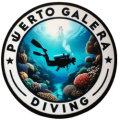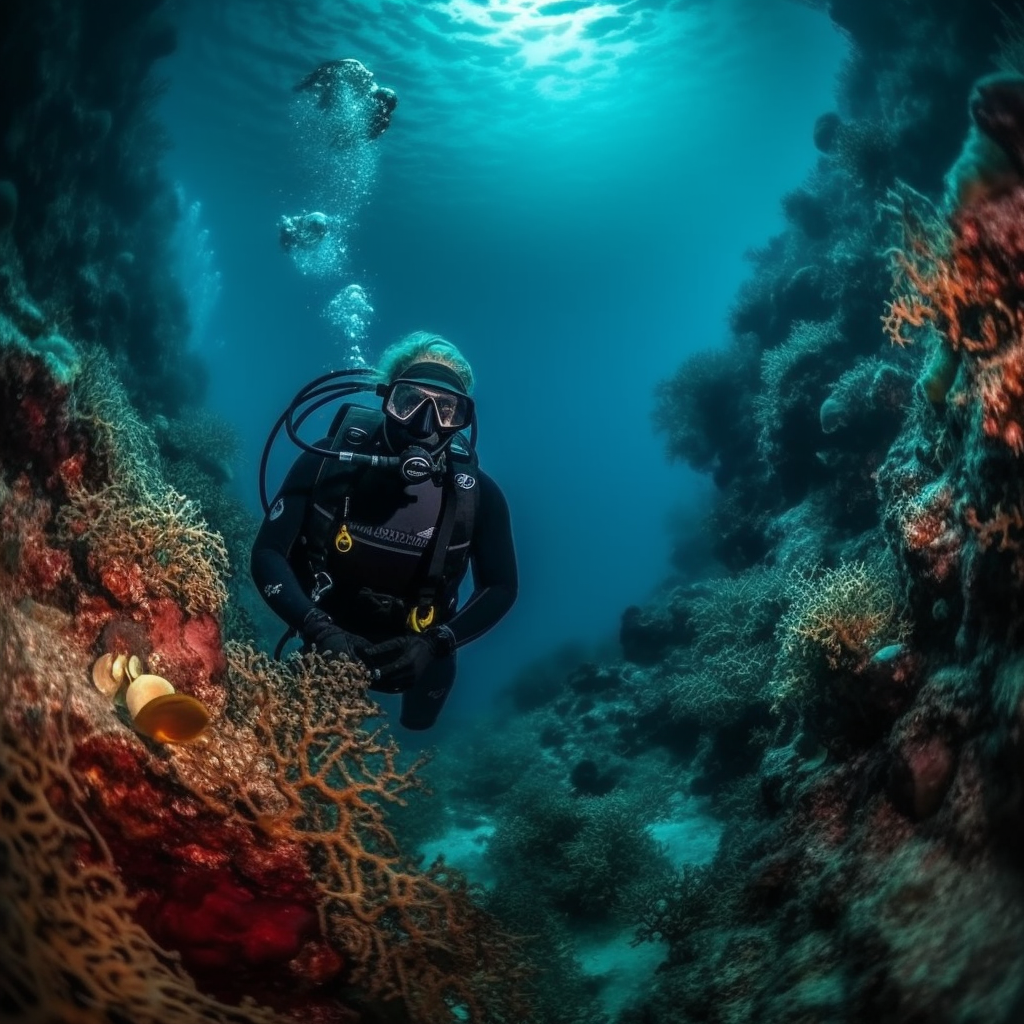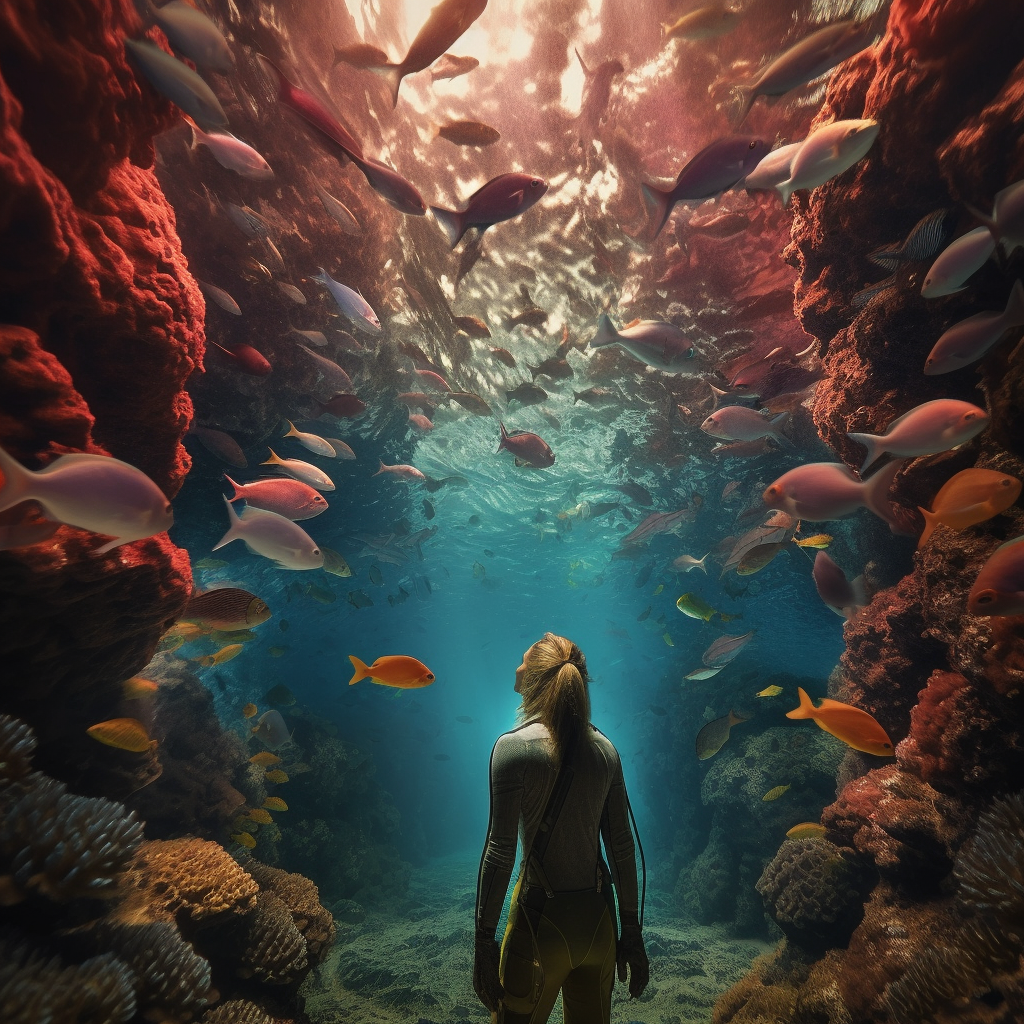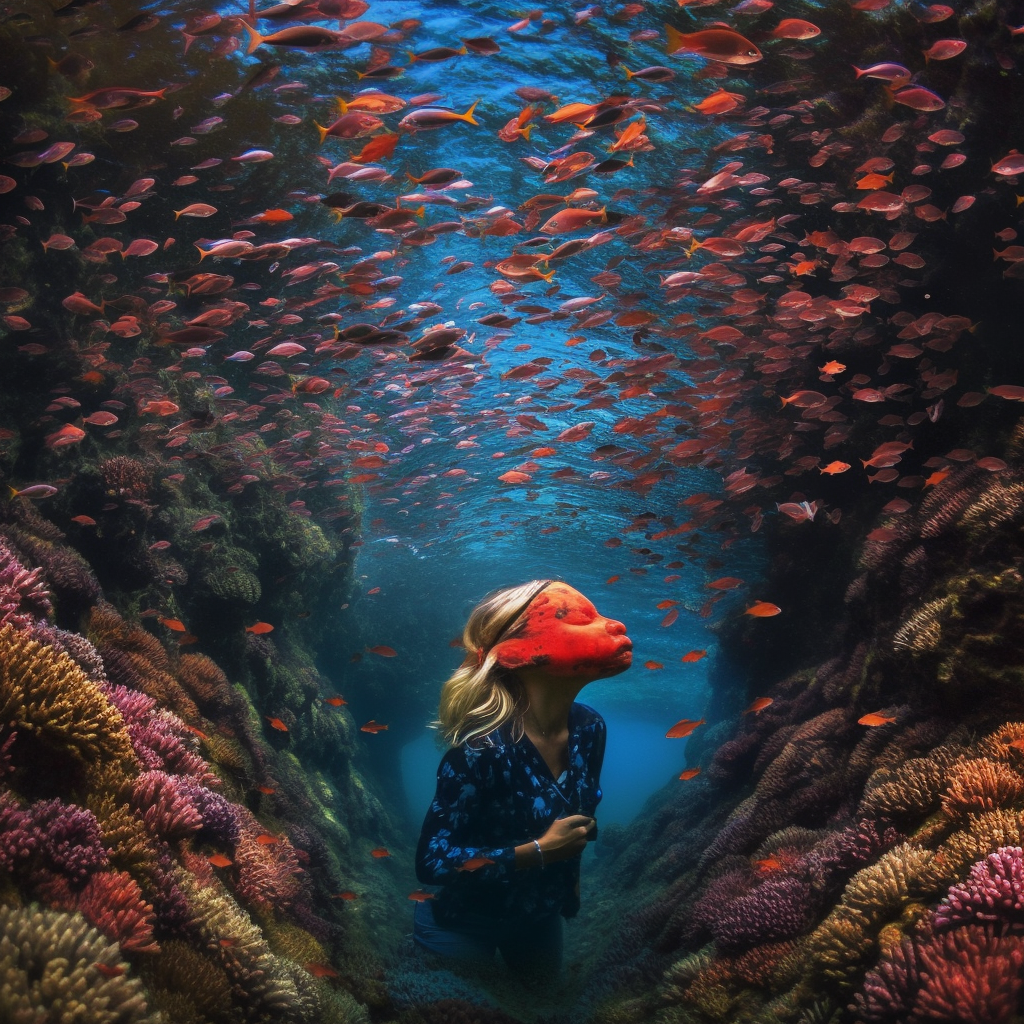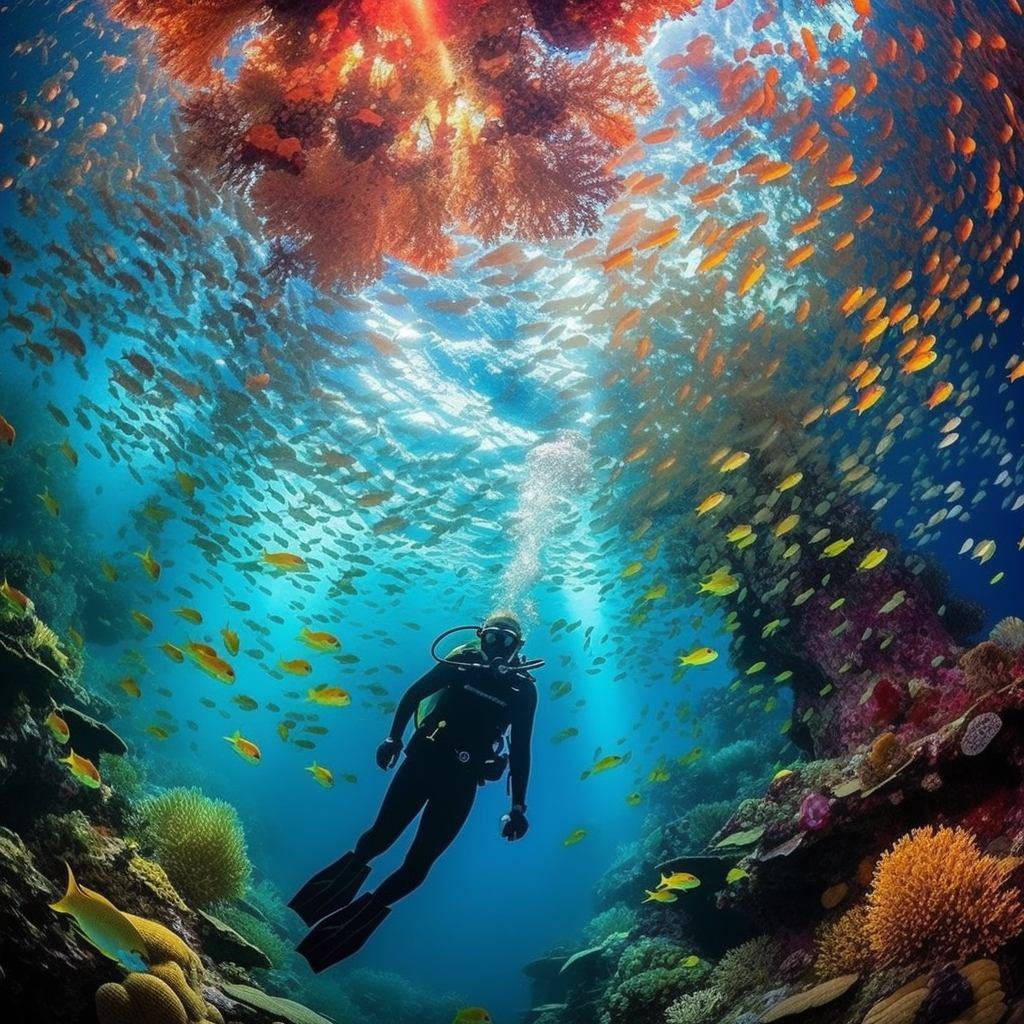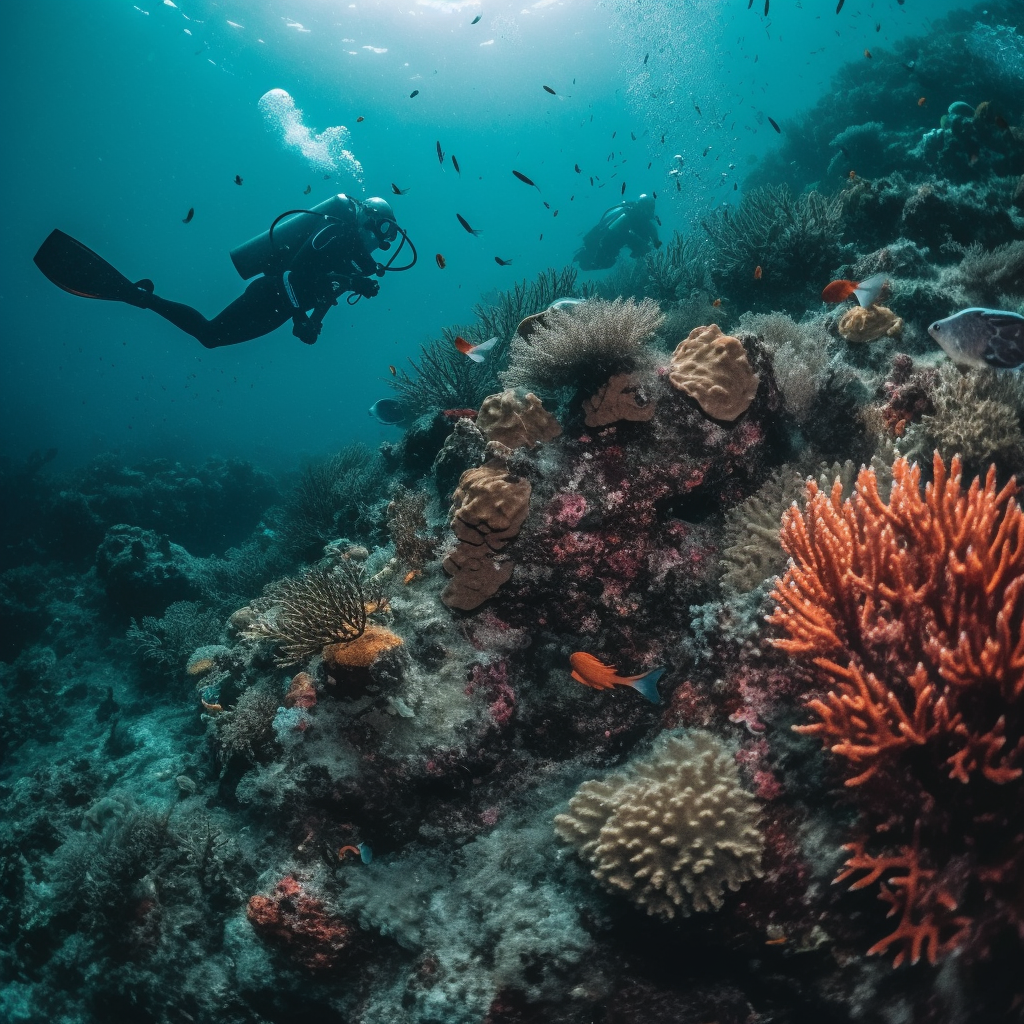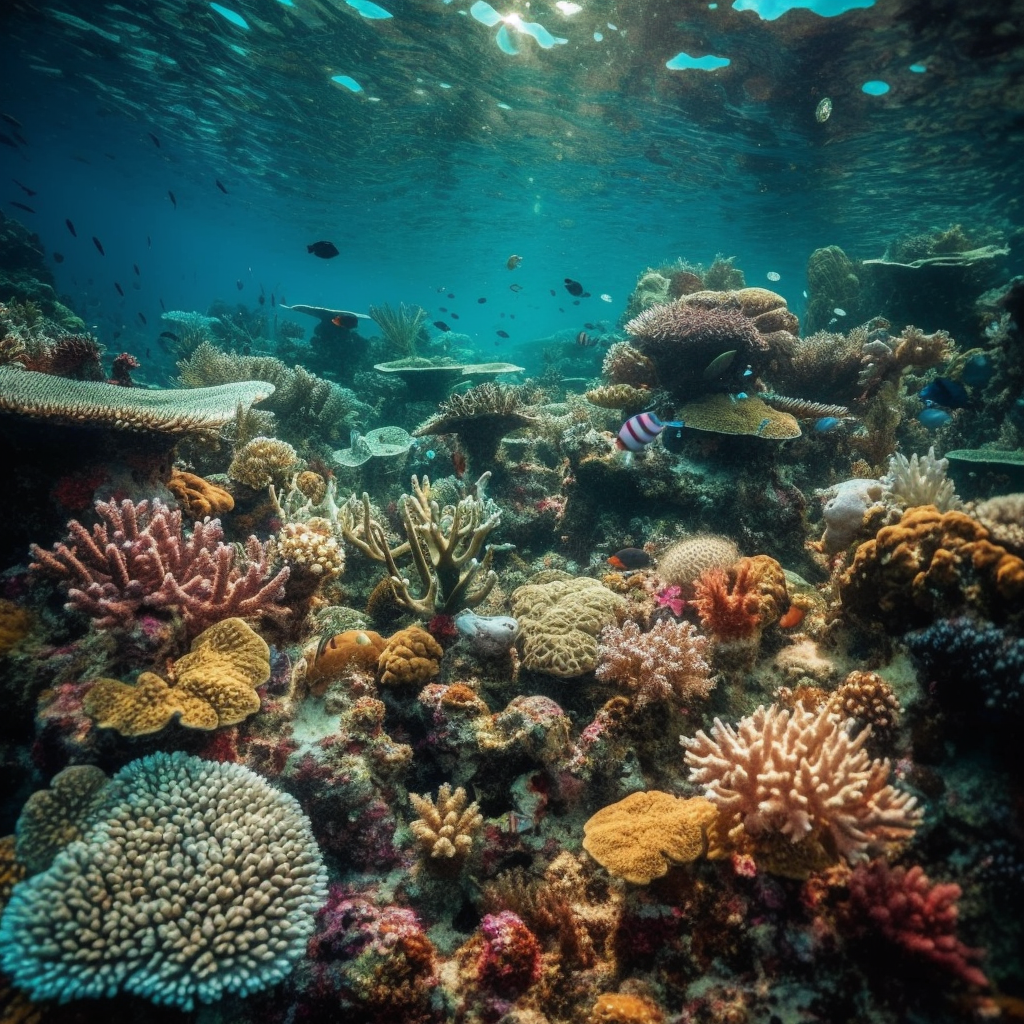Scuba diving is a thrilling and exciting activity that allows individuals to explore the underwater world. It involves the use of a self-contained underwater breathing apparatus (SCUBA) that enables divers to breathe underwater. Scuba diving is a popular recreational activity that attracts people from all over the world.
Underwater, divers can explore a whole new world that is teeming with life and beauty. They can discover coral reefs, shipwrecks, and a variety of marine life. Scuba diving allows individuals to experience weightlessness and the feeling of being suspended in water. It is a unique and unforgettable experience that many people enjoy.
Overall, scuba diving is an exciting way to explore the underwater world and experience the thrill of being weightless. It is a popular recreational activity that attracts people of all ages and backgrounds. With the right training and equipment, anyone can enjoy the beauty and excitement of scuba diving.
Understanding Scuba Diving
Scuba diving is an underwater activity that involves using a self-contained underwater breathing apparatus (scuba) to explore the underwater world. It is a popular recreational activity around the world and also has practical applications in fields such as scientific research, military operations, and commercial diving.
Scuba diving allows individuals to immerse themselves in the underwater world and experience the beauty and wonder of marine life, coral reefs, and underwater caves. Scuba divers can explore the depths of the ocean and discover new species of marine life, as well as explore sunken ships and other underwater structures.
To become a scuba diver, individuals must undergo training and certification through a recognized scuba diving organization. This training includes learning how to use scuba equipment, safety procedures, and techniques for swimming and navigating underwater.
Scuba diving can be a thrilling and rewarding experience, but it also requires caution and respect for the underwater environment. Scuba divers must be aware of potential hazards such as strong currents, marine life, and underwater structures. They must also follow responsible diving practices to protect the underwater environment and preserve it for future generations.
Overall, scuba diving is a unique and exciting activity that allows individuals to explore the wonders of the underwater world. Whether for recreational or practical purposes, scuba diving offers a chance to discover new depths and expand one’s understanding of the world around us.
Scuba Diving Equipment
Scuba diving requires specialized equipment to ensure the safety and comfort of the diver while exploring the underwater world. The following are the most essential pieces of equipment used in scuba diving:
- Scuba Gear: The term “scuba gear” refers to all the equipment needed for scuba diving, including the regulator, tank, buoyancy control device (BCD), and wetsuit.
- Mask: A mask is used to create an air pocket in front of the diver’s eyes, allowing them to see underwater. It also protects the eyes from water pressure and debris.
- Snorkel: A snorkel is a tube that allows the diver to breathe while floating on the surface of the water.
- Fins: Fins help the diver move through the water more efficiently, conserving energy and reducing fatigue.
- Tank: The tank holds compressed air that the diver breathes through the regulator.
- Wetsuit: A wetsuit keeps the diver warm by trapping a thin layer of water between the suit and the skin, which the body then heats up.
- BCD: The BCD is used to control the diver’s buoyancy by adjusting the amount of air in the vest.
- Buoyancy Control Device: The Buoyancy Control Device (BCD) is a vest worn by the diver that allows them to control their buoyancy by inflating or deflating the vest with air.
- Dive Computer: A dive computer is used to monitor the depth, time, and decompression limits during a dive.
- Underwater Cameras: Underwater cameras are used to capture images and videos of the underwater environment.
Scuba diving equipment comes in a range of styles and sizes, and it is essential to choose gear that fits the diver properly and is appropriate for the type of diving they plan to do. Proper maintenance and care of scuba equipment are also crucial to ensure the safety and longevity of the gear.
Getting Started with Scuba Diving
Before diving into the world of scuba diving, one needs to undergo proper training and certification. Scuba diving involves exploring the underwater world and experiencing the beauty of marine life. It requires a certain level of knowledge, skills, and physical fitness to ensure safety and enjoyment.
To start with scuba diving, one needs to find a reputable training center that offers scuba diving courses. These courses typically involve a combination of classroom sessions, pool training, and open water dives. The training center will provide all the necessary equipment, including a wetsuit, fins, mask, and regulator.
The first step in scuba diving training is knowledge development. This involves learning about the basic principles of scuba diving, including the physics of diving, the effects of pressure on the body, and how to use scuba equipment safely. The training center will provide course materials, such as manuals and videos, to help the student learn.
After completing the knowledge development portion of the course, the student will move on to developing swimming skills in a pool. This involves learning how to tread water, swim with scuba gear, and perform basic scuba skills, such as clearing a mask and regulator.
Once the student has completed the pool training, they will move on to open water dives. These dives are conducted in a natural body of water, such as a lake or ocean, and are designed to help the student apply the skills they learned in the pool. The open water dives are typically conducted over the course of several days, with each dive building upon the previous one.
Upon completion of the open water dives, the student will be awarded an open water diver certification. This is a recognized scuba certification that allows the certified diver to dive to a maximum depth of 60 feet. The certification is valid for life, but it is recommended that certified divers continue to log their dives in a logbook and take refresher courses periodically.
For those who are unsure if scuba diving is for them, many training centers offer a Discover Scuba Diving program. This program allows the student to try scuba diving in a pool or shallow water without committing to a full certification course.
In summary, getting started with scuba diving involves finding a reputable training center, completing knowledge development and swimming skills training in a pool, and conducting open water dives to apply the skills learned. Upon completion, the student will be awarded an open water diver certification, which is a recognized scuba certification that allows the certified diver to dive to a maximum depth of 60 feet.
Scuba Diving Institutions
Scuba diving is a popular recreational activity that requires proper training and certification from recognized institutions. These institutions provide training, certification, and other services required to ensure safe and enjoyable diving experiences. Some of the most popular scuba diving institutions include PADI, SSI, and NAUI.
PADI
PADI (Professional Association of Diving Instructors) is one of the largest scuba diving institutions in the world. It offers a wide range of scuba diving courses, from beginner to professional levels. PADI courses are designed to provide divers with the necessary skills and knowledge to enjoy safe and fun diving experiences. PADI also offers eLearning programs, which allow students to learn at their own pace and convenience.
PADI Dive Centers are authorized to offer PADI courses and services. These centers are staffed by certified PADI instructors who are trained to provide high-quality training and services to divers. PADI Dive Centers also offer equipment rentals, guided dives, and other services to make diving more accessible and enjoyable.
SSI
SSI (Scuba Schools International) is another popular scuba diving institution that offers a wide range of courses and services. SSI courses are designed to provide divers with the necessary skills and knowledge to enjoy safe and fun diving experiences. SSI also offers eLearning programs, which allow students to learn at their own pace and convenience.
SSI Dive Centers are authorized to offer SSI courses and services. These centers are staffed by certified SSI instructors who are trained to provide high-quality training and services to divers. SSI Dive Centers also offer equipment rentals, guided dives, and other services to make diving more accessible and enjoyable.
NAUI
NAUI (National Association of Underwater Instructors) is a non-profit organization that offers scuba diving courses and services. NAUI courses are designed to provide divers with the necessary skills and knowledge to enjoy safe and fun diving experiences. NAUI also offers eLearning programs, which allow students to learn at their own pace and convenience.
NAUI Dive Centers are authorized to offer NAUI courses and services. These centers are staffed by certified NAUI instructors who are trained to provide high-quality training and services to divers. NAUI Dive Centers also offer equipment rentals, guided dives, and other services to make diving more accessible and enjoyable.
In conclusion, scuba diving institutions such as PADI, SSI, and NAUI play a crucial role in ensuring safe and enjoyable diving experiences. These institutions provide training, certification, and other services required to make diving more accessible and enjoyable. Divers should choose a reputable institution and dive center to ensure they receive high-quality training and services.
Scuba Diving Locations
Scuba diving is a popular recreational activity that allows individuals to explore the underwater world. There are many locations around the world that are ideal for scuba diving, each with its own unique features and attractions. Some of the most popular scuba diving locations include dive sites in Florida, California, and Hawaii.
Florida is known for its warm waters and abundant marine life, making it a popular destination for scuba divers. Some of the top dive sites in Florida include the Florida Keys, West Palm Beach, and the Gulf of Mexico. These locations offer a range of diving experiences, from shallow reefs to deep wrecks.
California is another popular scuba diving location, with its rugged coastline and diverse marine life. Some of the top dive sites in California include Catalina Island, Monterey Bay, and the Channel Islands. These locations offer a range of diving experiences, from kelp forests to rocky reefs.
Hawaii is also a popular scuba diving location, with its clear waters and abundant marine life. Some of the top dive sites in Hawaii include Molokini Crater, Hanauma Bay, and the Kona Coast. These locations offer a range of diving experiences, from shallow reefs to deep drop-offs.
When choosing a scuba diving location, it’s important to consider factors such as water temperature, visibility, and marine life. It’s also important to choose a reputable dive operator and to follow all safety guidelines to ensure a safe and enjoyable diving experience.
Safety in Scuba Diving
Scuba diving is an exciting and rewarding activity that allows people to explore the underwater world. However, it also comes with some risks. Therefore, safety is a top priority when it comes to scuba diving.
When diving, it is essential to have a regulator, which is the device that delivers air from the tank to the diver. The regulator must be regularly serviced and checked to ensure it is functioning correctly. In addition, divers should always carry a spare regulator in case of an emergency.
Open water dives are a significant part of scuba diving, but they can also be dangerous. Therefore, it is essential to follow all safety procedures and guidelines. Before diving, divers should check the weather conditions and ensure they have the proper equipment, such as a dive flag, a buoyancy control device, and a dive computer.
Buoyancy control is crucial in scuba diving, as it allows divers to move around underwater without disturbing the environment. Divers should practice controlling their buoyancy regularly, as it can be challenging to master.
Navigation is also an essential aspect of scuba diving. Divers should always plan their dives and follow a pre-determined route to avoid getting lost. They should also carry a compass and a dive slate to help them navigate underwater.
Diving with a buddy is another essential safety measure in scuba diving. Buddies should always stay together and communicate regularly to ensure each other’s safety. In addition, divers should always carry a whistle or other signaling device to attract their buddy’s attention in case of an emergency.
Dry suits are often used in cold water scuba diving to keep the diver warm. However, they can also be dangerous if not used correctly. Divers should be properly trained in using dry suits and should always check them before diving.
Weightlessness is one of the unique experiences of scuba diving, but it can also be disorienting. Divers should be aware of their surroundings and avoid touching or disturbing the environment.
Finally, divers should be aware of any health or medical conditions that may affect their ability to dive safely. They should always consult a doctor before diving if they have any concerns.
In summary, safety is paramount in scuba diving. Divers should always follow safety procedures and guidelines and be aware of the risks involved. By doing so, they can enjoy the incredible experience of exploring the underwater world safely.
Scuba Diving Community and Conservation
Scuba diving is an activity that has a significant impact on the underwater environment. The scuba diving community has recognized the importance of conservation and ocean protection, and many efforts have been made to promote sustainable diving practices.
The dive community includes a diverse range of individuals, from recreational divers to professional divers, instructors, and marine biologists. Their shared passion for the ocean has led to the creation of various organizations and initiatives that aim to protect the marine environment.
Conservation is a crucial aspect of scuba diving, and many dive operators and organizations have implemented sustainable practices to minimize the impact of diving on the underwater ecosystem. Some of these practices include:
- Limiting the number of divers at a dive site
- Educating divers on proper buoyancy control to avoid damage to coral reefs
- Encouraging the use of environmentally-friendly products, such as reef-safe sunscreen
- Supporting research and monitoring of marine ecosystems
The scuba diving community has also played a significant role in ocean conservation efforts. Many dive operators and organizations have partnered with marine conservation groups to support research, education, and advocacy initiatives. Some of these partnerships have resulted in the creation of marine protected areas and the implementation of sustainable fishing practices.
Marine biologists have also been an integral part of the scuba diving community, providing valuable insights into the underwater world and the impact of diving on marine ecosystems. Their research has helped to identify areas of concern and develop strategies to mitigate the impact of diving on the environment.
In summary, the scuba diving community has recognized the importance of conservation and ocean protection and has taken significant steps to promote sustainable diving practices. By working together with marine conservation groups and marine biologists, the dive community has played a crucial role in protecting the underwater environment for future generations.
Advanced Scuba Diving
Advanced scuba diving refers to diving beyond the limits of recreational scuba diving. This type of diving typically involves more complex dive planning, specialized equipment, and advanced training. Advanced scuba diving can be a rewarding and exciting experience for those who have a passion for exploring the underwater world.
To become an advanced scuba diver, individuals must complete additional scuba lessons and receive certification from a dive instructor. This certification typically involves completing a certain number of dives and demonstrating proficiency in advanced diving skills such as deep diving, navigation, and buoyancy control.
One of the key differences between recreational and advanced scuba diving is the use of specialized equipment. Advanced scuba divers may use a variety of additional equipment such as dive lights, underwater scooters, or rebreathers to enhance their diving experience.
Travel is another important aspect of advanced scuba diving. Many advanced divers travel to remote locations to explore unique dive sites and marine ecosystems. These trips may require specialized planning and equipment, such as dive float or spearfishing gear.
For those interested in pursuing advanced scuba diving, it is important to work with a reputable dive center and dive instructor. These professionals can provide guidance on dive planning, equipment selection, and safety protocols.
Overall, advanced scuba diving can be a rewarding and exciting experience for those who have a passion for exploring the underwater world. With the right training, equipment, and planning, divers can safely and responsibly explore the depths of the ocean.

